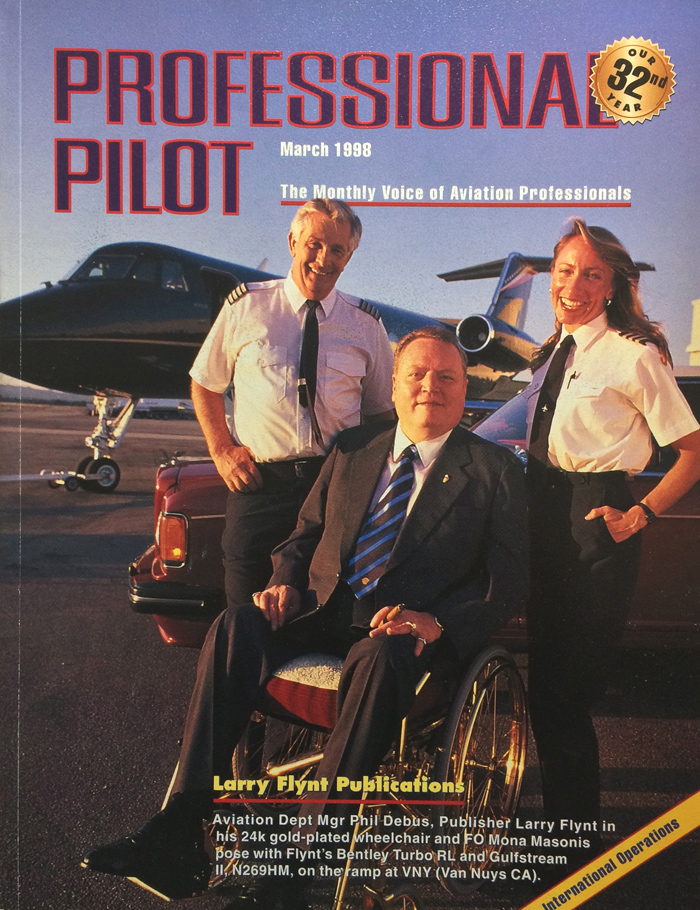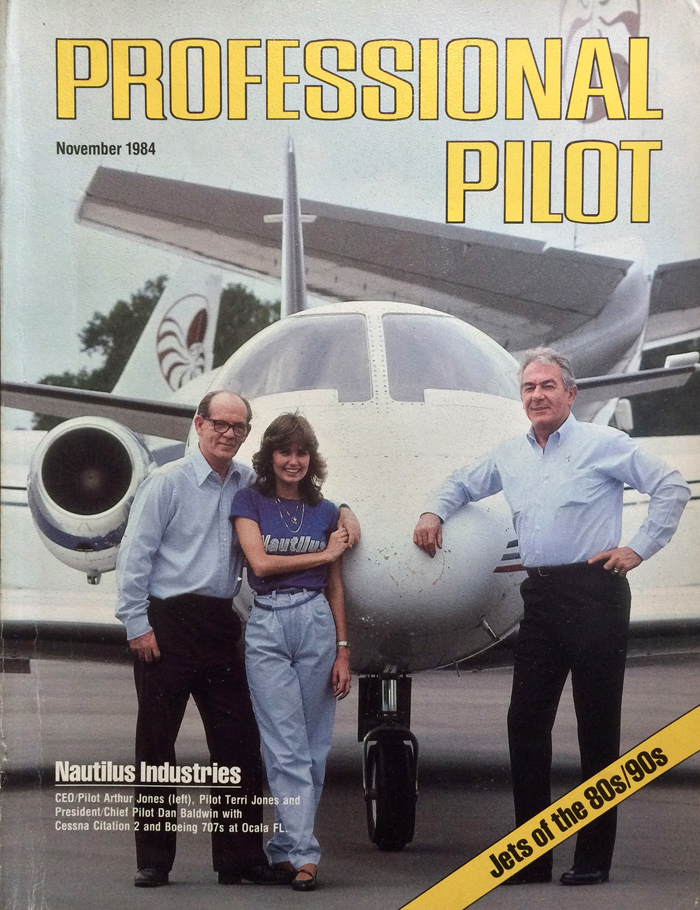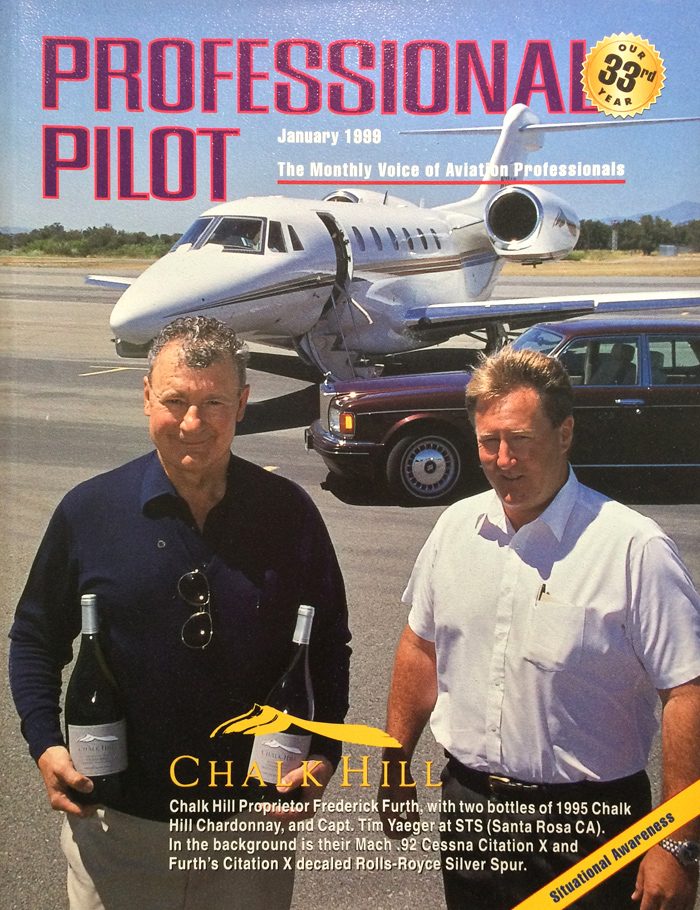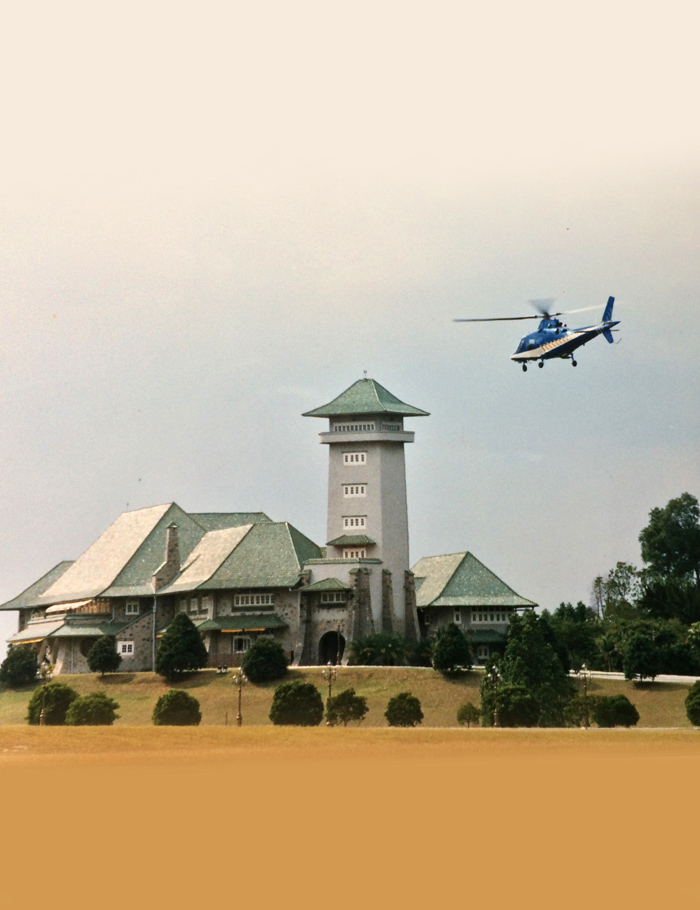Ceramica Cleopatra Group prepares for more Gulfstreams, Cirrus Vision SJ50s.
By Grant McLaren
Professional Pilot Magazine November 2008
Cairo-based industrial conglomerate operates Gulfstream G550 to promote ceramic tile, citrus fruit, hotel and media investments.

Group Cleopatra Mohamed Abou el-Enein prepares to board his G550 at GVA (Geneva, Switzerland). More high-tech bizav acquisitionas are on the chairman’s agenda.
Group Cleopatra is the world’s largest producer of ceramic tiles with annual production in excess of 900 million square feet of Italian inspired product manufactured in state-of-the-art Egyptian factories. Chairman Mohamed Abou el – Enein—known locally as the Tile King—launched Group Cleopatra in 1983 with just a few employees and big dreams. Today, with 14,500 employees, Group Cleopatra has grown to become a leading group of diversified companies with activities ranging from agricultural development and tourism to mining and real estate. Cleopatra Silicon Valley manufactures the first integrated circuit cards (smart cards) in the region, Galleria Cleopatra is the largest shopping mall in Alexandria, Egypt, and Mohamed’s latest venture, Cleopatra Media, is poised to launch 3 satellite TV stations in Egypt. To connect the chairman and company executives with customers and business opportunities at the 4 corners of the world Group Cleopatra deploys a Gulfstream G550 with orders in the works for an additional G550, 2 G650s and 2 Cirrus Visions.
“I’ve always had a passion to create new businesses and try to do things that have never been done before,” says Mohamed who’s reclaimed vast tracks of desert in southern Egypt to grow citrus fruits, created the world’s largest ceramic tile factory on barren desert property and serves as a member of the Egyptian parliament.
“I believe in managing all my businesses personally and corporate aircraft have made this possible over the years,” he says. “My plan is to use the very latest in technology and this extends to our corporate flight department. One day we look forward to operating a SSBJ for long-haul international flights, as well as some form of tiltrotor for local transport within Egypt and the region.”
Two professional pilots—Dir Aviation Capt Heimo Koncilia and First Officer Michaela Plank—support Mohamed, an ATP rated G550 captain himself, on a global schedule now up to 750 annual flying hours.
Dir of Maintenance Roy Kemp supports the G550 at CAI (Intl, Cairo, Egypt), Aviation Ops Mgr Emad Fahem orchestrates a busy flying schedule while Universal Weather & Aviation is tasked with international trip support.
Group Cleopatra has 2 private runways – AIS (Ain Sukhna, Egypt) with a visual approach located south of Suez on the Red Sea coast, and GSQ (Shark el Oweinat, Egypt) with an NDB approach next to Cleopatra agricultural farming activities near the Sudanese border.
Both company runways, which are daylight VFR use only, are equipped with hangars, towers and a full accoutrement of safety and firefighting equipment. Corporate missions range from 4 to 6-stop same-day sorties throughout Egypt and the region – with G550 flights as short as 98 nm between CAI and ALY (Alexandria, Egypt) – up to max-range 13-hour-plus launches to Asia and North America.
Longest G550 flight sectors to date include CAI–PBI (Intl, West Palm Beach FL) at 13 hr, NRT (Narita, Tokyo, Japan)–CAI at 12 hr 50 min and ERS (Windhoek, Namibia)–STT (St Thomas, US Virgin Islands) at 12 hr 30 min. Other corporate missions involve moving teams of engineers to industrial development sites and ferrying management groups to industry trade fairs worldwide.
“We live in hotels and run busy schedules with about 60 hours flying each month and 15 or so RONs,” says Koncilia, a 13,000-hr TT pilot with 27 years flying experience who’s type rated in the Gulfstream II, III, IV, V and G550 as well as in the Boeing BBJ. “Whatever is doable we do – from multihop day trips throughout Egypt to max-range intercontinental missions.” He adds, “My initial plan was to come here for 2 weeks as an instructor pilot for Mohamed, but I’ve been here more than a year and a half so far. It’s an exciting and challenging routine – and the G550 is a perfect aircraft for our mission mix.”
An example of the sort of schedule Koncilia, Plank and Mohamed manage is the planned flight activity for May 22 – the final day of EBACE 2008 at GVA (Geneva, Switzerland. “Our plan was to depart GVA for BLQ (Bologna, Italy), continue to CAI to pick up a VIP passenger before heading to NCE (Nice–Côte d’Azur, France),” explains Koncilia. “As overnight parking was not permitted during that time at NCE we’d then continue on to BLQ to overnight.” The crew had to completely change all slots 3 times, due to delayed passenger arrival at GVA, and ended up flying a late afternoon departure GVA–SSH (Sharm el Sheikh, Egypt), where the chairman owns hotels clustered above the shimmering drama of the Red Sea, then on to CAI and NCE before overnighting at BLQ at 2 or 3 am the next morning.
Plank, a former Cessna Citation CJ1 pilot, joined Group Cleopatra 18 months ago with 1000 hrs TT and has now racked up 700 G550 flight hrs. “I love flying the G550 although it was quite an upgrade from the CJ1,” she says. “Our missions take us all over the world, from Central Africa to Russia and China, North and South America, Hawaii and the Pacific Rim. My favorite flight so far was a trip we made to PBH (Paro, Bhutan) – one of the most isolated and least developed nations in the world – with a 6445-ft runway at 7332 ft elevation and a steep 2500-fpm visual approach descent through the mountains with a challenging contingency procedure.”
Fleet development
In the early 1980s Mohamed bought the first motorized glider in the Middle East— a Valentin Taifun 17EII—and flew it for 3 years. “My business is on the ground but my passion was in the air,” he says. “I would fly between the pyramids of Giza, banking over the Great Sphinx, and was quickly sold on private aviation.”
Traveling to YGM (Gimli MB, Canada) Mohamed completed a private pilot course, soloing after 21 days, before proceeding to Wichita KS to order a Beech Baron in 1986. Mohamed flew the Baron for 6 years and returned to the US in 1999 to take delivery of a King Air 200 while awaiting an on-order GIVSP. “I flew the GIVSP for 3 years until my G550 was delivered,” recalls Mohamed. “Things moved very quickly in those days. I went to Florida for 45 days to earn my comm-multi-inst and ATP ratings and a year later returned to the US to complete my G550 rating.”
He adds, “I chose the G550 because it’s the most sophisticated and advanced business aircraft in the world with the longest range and good availability of well trained support pilots.”
For his next upgrade in airborne flying stock Mohamed has ordered 2 G650s, with 2015 deliveries, to boost range capability to 7000 nm at Mach 0.85 and 5000 nm at Mach 0.90. As delivery of the highly popular G650 is still 8 years out Mohamed ordered a second G550, with 2010 delivery, equipped with EVS, SVS and broadband Internet. During EBACE 2008 the chairman also placed orders for 2 Cirrus VLJs, with 2012 delivery, and plans to deploy these sporty single turbofans on short hops around Egypt and the region. “My proposal is to always have a second aircraft available to supplement domestic trips and to provide backup when the G550 is in for maintenance,” says Koncilia. “CAI–ALY, SSH and HRG (Hurghada, Egypt) are 20 to 40-min flights and they’re routine destinations for us. Five [short] legs in quick succession always make for a fun day in the G550 and should suit the Cirrus jets well.”
Looking to the future, Group Cleopatra is only held back from ordering an SSBJ due to product availability, says Mohamed, a consummate shopper: “If an SSBJ was ready today I would order one without any hesitation.”
Next on the ordering agenda is a light twin helicopter – likely either an AgustaWestland A109 Grand or a Eurocopter EC135. Unfortunately, regulations in Egypt prohibit private use of helicopters so the new vertical takeoff asset will be based at the Group Ceramica Cleopatra factory at Bologna until the regulatory situation changes in Egypt. Traffic congestion can be horrendous in Cairo and a helicopter would reduce travel time considerably between Mohamed’s home and his factories as well as to his private island on the Nile.
Maintenance and scheduling
Kemp looks after 100-hr checks on the N-registered G550 at CAI, together with routine maintenance, and does flight mechanic duty aboard most international sectors. Because hangar space is not available at CAI, Group Cleopatra’s aircraft stays out on the open ramp with nearest Gulfstream service support 3 hours away at either GVA or DXB (Dubai, UAE).
“Product support has been excellent on our G550, dispatch reliability has been better than 99% and we’re still under warranty,” says Maintenance Technician Thomas Driscoll, who earned his A& P license in 1985 and has since worked as a police officer for 7 years, an ambulance EMT for 2 years and manager of a meat packing plant for 5 years. He moved to Cairo after marrying his Egyptianborn wife. “We take the G550 to SAV for 500-hr checks,” he says.
As flight mechanic, Kemp assists pilots with walkarounds, fueling and baggage loading but is not involved in inflight passenger catering as Group Cleopatra boards dedicated flight attendants. With the future prospect of hangar space at CAI, Kemp hopes to ramp up spares and GSE to tackle G550 annual checks at home in Egypt.
International flight scheduling is coordinated with DXB-based ExecuJet Aviation Group, although Fahem, an Egyptian national who grew up in Canada, is coordinating more of the routine scheduling tasks within the region. Operational challenges include juggling slots in Europe, to adapt to changing passenger schedules, and altitude holds over Russia and China. “If necessary we’ll fly up to FL 470–510 at Mach 0.83, on long international sectors to maximize range but we’re often held down in altitude over China and Russia. This can impact range and cause unscheduled fuel stops,” observes Koncilia.
To maximize cost effectiveness the crew always shops for fuel and negotiates fuel uplifts in advance. “Our cost of fuel at CAI is $3 a gallon but we paid over $7 a gallon recently at LAS,” says Kemp. “Whenever practical we’ll tanker fuel from Egypt.” Favorite FBOs are the Signature chain – “nice but overpriced,” says Koncilia – along with Jet Aviation GVA and Harrods Aviation LTN (Luton, London, England).
Ground support in Japan and China is also expensive and of very high caliber. Both Fahem and Koncilia make a special effort to review invoices after international flights as there are ongoing discrepancies in overflight charges, handling and service costs. “We’re constantly getting double invoices, or wrong invoices, which I’m sure many companies just pay without checking,” says Koncilia. “We’ve changed our billing system so that we can review all charges before paying anything.”
Pilot lifestyles
Koncilia, a board certified plastic surgeon and G550 captain, enjoys the lifestyle of living in Vienna, staying in Cairo during his duty time and navigating the world airways. Medical and flying professions, he says, share certain similarities as both demand excellence and can involve long duty days. “Once, while performing microsurgery to reattach a severed arm, I was at the operating table continuously for almost 24 hours,” recalls Koncilia. “Duty days within the flightdeck of our G550 are never quite this long but the challenges of remaining alert and effective can be similar.”
Koncilia and Plank, both Austrian nationals, enjoy occasional vacations—letting contract crews take over the G550 front office—but the long-term objective is to have better organized flying schedules and hard time off.
“Ideally we should have 3 fulltime pilots on rotation schedules to back up Mohamed,” suggests Koncilia. “European-based FAA-qualified G550 captains, working 2 weeks on and 2 weeks off, or North American-based crews, working one month on and one month off, would work very well. For the time being, however, we have access to 10 or so captain qualified G550 pilots who we can bring in for relief or to help fly maintenance flights.”
Safety of operations is of paramount importance to Koncilia. “When I first arrived here I established operating procedures, including CRM practices,” he says. “Mohamed and I train together annually at FlightSafety Intl and we always stick to checklists and procedures. Mohamed is an experienced, focused pilot who takes flight duty seriously.”
Hiring qualifications for a new Group Cleopatra captain, says Koncilia, include a minimum of 8000 hrs TT as well as enough adaptability to live in Egypt and fly with an owner pilot. With typical ops including constant global travel and occasionally dropping in at very remote third-tier international airfields, experience in the flightdeck, and a compatible personality, are essential attributes for newhires. Koncilia says, “Pilot benefits include high pay scales, company provided housing, car, maid and driver. Compensation is so attractive here that contract G550 pilots from the world over clamor for the chance to fly with Group Cleopatra when the opportunity comes up.”
He adds, “Flying with an owner can put special demands on a pilot and some pilots just cannot seem to cope with it,” says Koncilia. “You need a certain personality and the chemistry must be there. It’s important to be able to relate together outside the aircraft before flying together in the flightdeck.” In this flight department the owner and crew often spend time together on the road, staying in the same hotels and having meals together, and perhaps attending yachting or motor racing events at destinations.
Endless opportunity
Thinking and acting on a very large scale has always paid off for Mohamed. As Group Cleopatra’s industrial empire continues to evolve new opportunities will surface for both company pilots and the population of Egypt in general.
Creating Italian-design ceramic tiles, with Egyptian craftsmanship, has given thousands of local workers valuable advanced technical skills. Group Cleopatra agricultural activities in southern Egypt, which involve diverting water from the Nile to irrigate vast areas of former desert, will support a future population of almost 500,000 in the region. “We’ve brought equipment and people into the desert and built entire infrastructures with 4-lane highways, electricity, water and runways to support new developments,” says Mohamed. “In the process we’ve become masters of blending international know-how with the richness of local resources and skills of the Egyptian people. Today, we continue to explore new business horizons and our corporate flight department will evolve to keep pace.”
For Group Cleopatra pilots future flying prospects have never been more exciting. Plank, who looks forward to advancing to captain on the G550, does not regret leaving the flightdeck of a CJ1 behind for a truly global flying career. “I love to fly,” she says. “It’s a very exciting lifestyle we have here and never boring.”
And for Group Cleopatra’s chairman the future is exciting too. With 2 new Cirrus jets on order there may be an opportunity for the chairman to once again fly between the great pyramids of Giza – perhaps with occasional tight circling turns around the Great Sphinx. After all, corporate aviation is not just about enhanced productivity – it’s also about enjoying life and the journey.





